What Is GAL (Generic Array Logic)? Basic Structure, Features, Advantages
2024-07-25
636
Catalog

Figure 1: Generic Array Logic (GAL) Device
Generic Array Logic (GAL) Explained
Generic Array Logic (GAL) is a programmable logic device based on Programmable Array Logic (PAL). GALs use Electrically Erasable CMOS (EECMOS) technology, improving programmability & simplifying programming. This makes GALs versatile in electronics.
GAL devices feature the Output Logic Macro Cell (OLMC). This component enhances flexibility & ease in setting up & modifying logic gates. It offers greater adaptability than PAL devices, because rapid design changes accelerate product launches & enhance functionality.
EECMOS technology in GALs supports environmental sustainability by allowing devices to be electrically erased & reprogrammed, reducing electronic waste. Extensive testing ensures that GALs are robust & efficient, meeting demands for high-performance & sustainable electronic components.
Generic Array Logic (GAL) Basic Structure
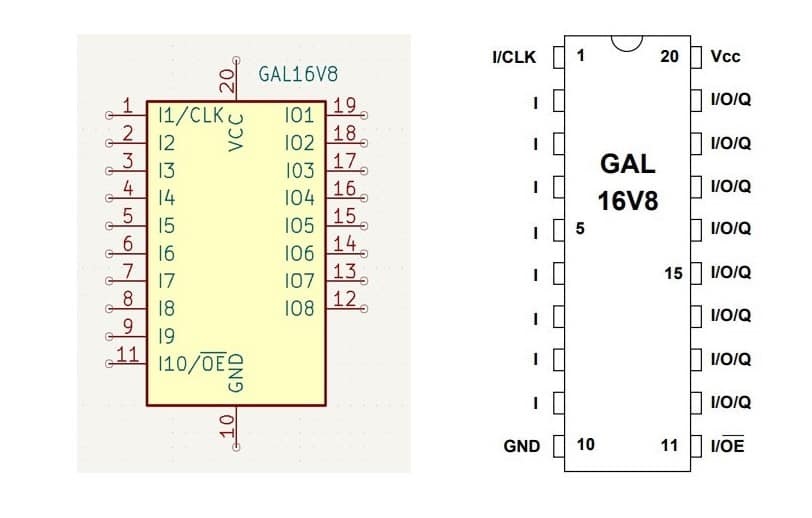
Figure 2: Representations of GAL16V8 Device
Generic Array Logic (GAL), such as the GAL16V8 model, showcases the sophistication & adaptability of modern programmable logic devices. The structure of the GAL16V8 is designed to meet various complex digital needs through its modular yet integrated components. Each component plays a strategic role in the device's functionality & flexibility.
Input Terminal Design - The GAL16V8 has a refined input system with pins 2 through 9 designated as input terminals. Each of these eight inputs is paired with a buffer that splits incoming signals into two complementary outputs. This dual-output approach enhances the fidelity & integrity of the signal as it enters the AND array. By maintaining signal integrity, the GAL16V8 ensures reliable & accurate processing of logic functions for systems that depend on precise signal manipulation.
AND Array Configuration - The AND array is a central component in GAL's architecture. Designed to handle complex logic operations efficiently. It consists of eight inputs & outputs, each producing two complementary outputs, forming a matrix of 32 columns. These feed into a secondary stage of eight-input OR gates, resulting in a grid of 64 rows. This structure creates a programmable matrix with 2048 potential nodes, each configurable to perform specific logic functions. This expansive matrix allows for high flexibility in programming the device to execute a wide array of logic operations, from simple gating functions to complex computational algorithms.
Output Macro Unit's Versatility - Each of the eight output macro units, connected to pins 12 to 19, highlights GAL's adaptability & functional richness. These units can be programmed to match any output configuration typical of a PAL device, with enhanced customization options. This programmability allows designers to tailor the logic outputs to meet the specific needs of their circuits.
Precision Timing with System Clock - A dedicated system clock connected via pin 1 is necessary for applications requiring synchronized sequential circuits. This system clock feeds directly into the D flip-flop clock input of each output macro unit. Thus, ensure all operations are timed with precision & consistency. While this feature underscores the GAL16V8's capabilities in synchronous operations, the lack of support for asynchronous circuits may limit its application in environments where timing flexibility is required.
Effective Output State Management - The output three-state control terminal is located at pin 11 and manages the output state of the GAL16V8.This feature allows the outputs to be placed in a high-impedance state, facilitating seamless integration of the GAL into more complex circuit arrangements without the risk of signal interference. This control mechanism is valuable in multi-chip setups where various components must interact without conflict.
Advanced Features
Advanced Programmable Logic Array - The heart of GAL technology is its programmable logic array, combining programmable AND gates with fixed OR gates. This allows designers to adjust connections, tailoring the device for specific logic functions. This adaptability supports a wide array of digital functions. Making it versatile & capable of handling diverse logic requirements.
Dynamic AND-OR Structure - GAL features a structure with multiple AND gates leading into fixed OR gates. The configuration of these AND gates determine the complex logic functions GAL can execute. Designers use hardware description languages like VHDL or Verilog for precise programming. It facilitates sophisticated logic circuit development within a programmable framework.
Extensive Programmability - GAL's extensive programmability, through internal connections between the AND and OR gates, allows designers to set specific logic operations. Advanced HDLs aid this flexibility, enabling detailed & accurate circuit function definitions, suitable for a range of digital circuits.
Combinational Logic Implementation - GAL excels in implementing combinational logic circuits, where outputs directly depend on current inputs without memory elements. This is favorable for applications needing quick & direct processing & ensure rapid response times & reliable performance in real-time tasks.
In-System Programming Capability - GALs support in-system programming, allowing updates & modifications directly within the circuit during the developmental phase. This feature enhances design flexibility, reduces development time, & accelerates product market introduction.
Versatility Across Applications - GALs are adaptable for various applications, from prototyping to small & medium-scale production. They are especially useful in projects requiring specific logic functions - where designing a custom integrated circuit (IC) is not feasible. Their versatility benefits sectors like automotive, consumer electronics, & telecommunications.
Handling of Low- to Mid-Range Complexity - While effective for low to mid-range complexity, GALs are less suited for highly complex systems compared to denser devices like FPGAs. This is an important consideration for designers based on project complexity & performance needs.
Comprehensive Development Tools - GALs come with a range of development tools & HDLs, required for programming, simulation, & verification of GAL-based systems. These tools streamline the development process. Thus, guarantee precision & efficiency in electronic device production.
Low Power Consumption - Known for lower power consumption, GALs are advantageous in power-sensitive applications. They promote energy conservation & extending operational lifespans in battery-powered devices.
Common Applications

Figure 3: Digital Logic Circuit Using a GAL16V8 Programmable Logic Device
Generic Array Logic (GAL) devices advanced capabilities & suitability for complex tasks are evident in the following applications:
Advanced Digital Circuit Design
GALs are used in digital circuit design & perform complex logic functions that previously required multiple fixed-logic devices. This ability allows for more compact & efficient circuit designs, reducing device footprints & enhancing performance. GALs' programmability enables use across multiple projects without extensive inventories, lowering costs & increasing design flexibility. Designers can quickly implement modifications.
Prototype Development
In prototype development, GALs offer advantages with their reprogrammability. This flexibility accelerates the prototype development cycle, allowing quick testing of functionalities & faster market introduction of new technologies. GALs' adaptability is valuable for developers constantly iterating & improving their designs.
Control Systems
GALs are used to control systems that manage machinery, vehicles, & other complex equipment. This precision & reliability are favorable in industries like manufacturing & automotive, where even minor errors can have consequences.
Timing Circuits
GALs are useful in timing circuits for sectors requiring precise timing sequences, such as telecommunications & specialized industrial equipment. Their ability to maintain timing accuracy improves system integrity, which is necessary for precise synchronization.
Automotive Applications
In the automotive sector, GALs manage functions ranging from engine control systems to lighting & in-vehicle entertainment. Their capability to handle complex logic operations suits the stringent demands of automotive electronics, requiring durability & high performance. GALs increase vehicle functionality & passenger experience.
Consumer Electronics
GALs are extensively used in consumer electronics, including home appliances & gaming consoles. They improve device performance by managing various functions. Hence, guarantee optimal efficiency & incorporating advanced features. The adaptability & functionality of GALs drive continuous innovation in consumer electronics.
Telecommunications
In telecommunications, GALs efficiently route signals & manage data traffic. Their programmability allows adaptation to different protocols & signal processing requirements, supporting robust & flexible communication networks.
Industrial Automation
In industrial automation, GALs control & optimize production lines, robotic arms, and other automated processes. Their reliability improves productivity & improve efficiency in manufacturing settings.
Comparative Analysis
Field-Programmable Gate Arrays (FPGAs)
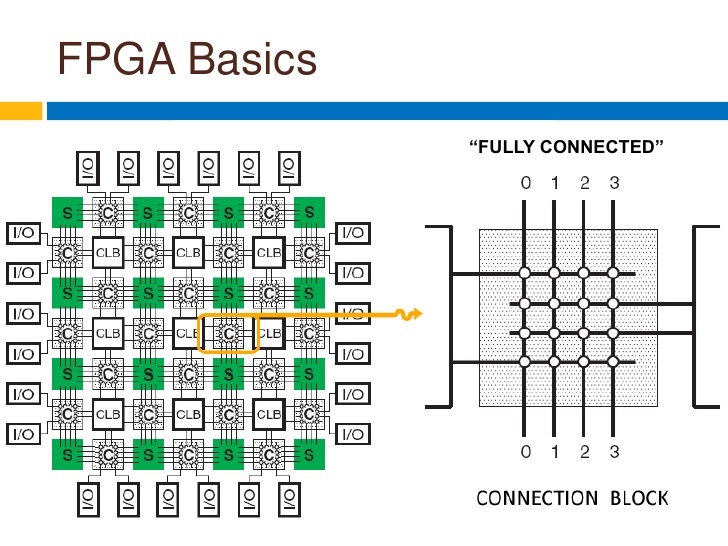
Figure 4: FPGA Basics
FPGAs are more complex than Generic Array Logic (GAL) devices. It features an extensive array of logic gates & configurable options. This allows FPGAs to handle highly intricate designs & large-scale integration, a capability that the simpler structure of GALs does not support. Plus, FPGAs provide superior flexibility through programmable interconnects & logic blocks, capable of executing a wide range of functions. In contrast, GALs, with their fixed architecture & limited reprogrammable cells, are better suited for straightforward tasks. The advanced architecture of FPGAs also results in higher performance & suitability for high-speed applications, compared to the slower capabilities of GALs. However, FPGAs generally come with higher costs & greater power consumption, reflecting their enhanced capabilities. Whereas GALs offer a more economical & energy-efficient option for simpler applications where cost & power are need to considers.
Complex Programmable Logic Devices (CPLDs)
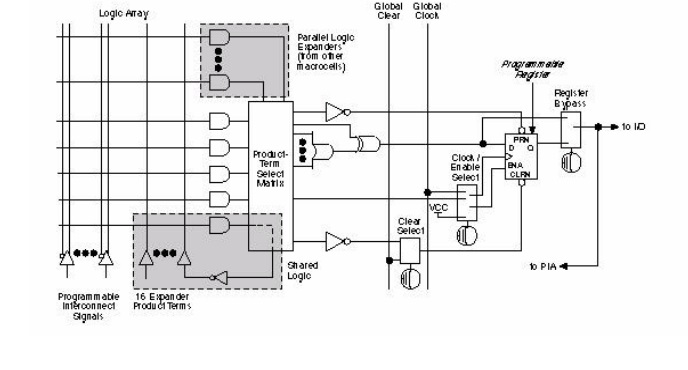
Figure 5: CPLDs Function Block
CPLDs bridge the gap between GALs & FPGAs, offering more complexity than GALs but less than FPGAs. They provide more logic resources within a structured yet somewhat flexible architecture. CPLDs can manage multiple complex logic functions simultaneously at faster speeds than GALs - making them suitable for more demanding applications. While they consume more power than GALs, CPLDs are more energy-efficient than FPGAs, providing a balanced option in terms of energy usage. This makes CPLDs ideal for projects that exceed the capability of GALs but do not require the high resource investment typical of FPGAs, fitting comfortably into intermediate complexity niches.
Programmable Array Logic (PAL)
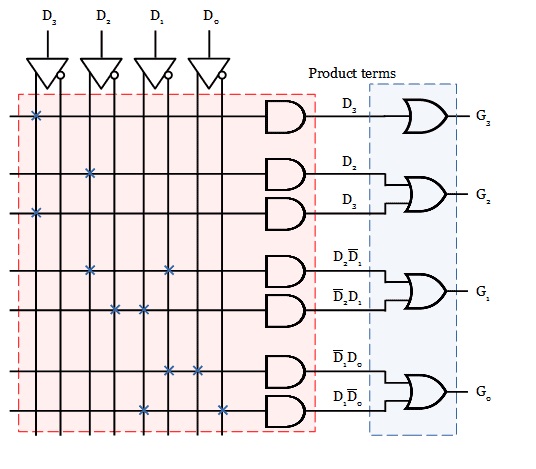
Figure 6: Programmable Array Logic (PAL)
Programmable Array Logic (PAL) devices are typically one-time programmable that limits their flexibility as they cannot be reconfigured once programmed. This makes PALs suitable for simple applications where circuit designs do not require modifications. In contrast, GALs, use hardware description languages for programming, offer the ability to implement & update more complex logic circuits through multiple reprogrammings. This enhances their usability in dynamic design environments where evolving needs must be met. Consequently, PALs are best used in applications needing simple, static logic replacements, whereas GALs can handle more complex designs due to their reprogrammable nature. That allows them to evolve alongside application requirements.
Programmable Logic Arrays (PLAs)

Figure 7: Programmable Logic Arrays (PLAs)
Programmable Logic Arrays (PLAs) offer high flexibility with both AND and OR gates programmable that surpasses the fixed AND configuration & programmable OR architecture seen in PALs & similar structures in GALs. Like PALs, PLAs are often one-time programmable that limits their reusability. In contrast, GALs can be programmed multiple times, providing greater flexibility for modifications as project requirements evolve. PLAs are optimal for applications requiring highly customized logic operations & connections. While less flexible than PLAs, GALs are still effective for less complex but programmable logic circuit requirements. GALs offer a practical solution in many scenarios not demanding the highest levels of customization.
Advantages of Using Generic Array Logic
Generic Array Logic (GAL) devices offer numerous advantages in digital circuit design. Compared to traditional Programmable Array Logic (PAL), GAL devices stand out with their advanced technology & superior features.
GAL devices can be electrically erased & reprogrammed multiple times, unlike older fuse-based technologies that allow only single use. Built with erasable CMOS technology, GAL devices can undergo over 100 programming cycles & provide developers with significant flexibility. This capability enables iterative refinement & evolution of electronic designs without needing physical hardware changes. Thus, reduce waste & development costs. This reprogrammability is beneficial in dynamic industries with frequently changing technological requirements.
The configurable output macrocell structure of GAL devices allow tailored electronic design solutions. This structure can emulate different configurations of a PAL device’s output, enabling a single GAL to replace multiple chips in complex systems. Such configurability simplifies hardware requirements, reduces inventory costs, & eases design complexities. System designers can dynamically optimize performance & cost-effectiveness, adjusting to varying project requirements with ease. This flexibility is invaluable for custom circuit designs & applications demanding specific functionalities.
GAL devices come with encryption capabilities to protect intellectual property & prevent unauthorized access or duplication of designs. In a highly competitive industry, this safety feature is needed to maintain market advantage. By embedding security directly into the device, GALs help companies protect their developmental investments & ensure their innovations remain proprietary.
GAL devices incorporate a dedicated storage area for electronic labeling that can store identification marks & other necessary data. This feature is useful for managing large inventories & tracking devices throughout large-scale production & distribution processes. Electronic labels improve logistical efficiency, improve security protocols, & guarantee adherence to industry standards by making device information readily accessible & verifiable.
GALs offer improved power efficiency compared to more complex programmable logic devices. Their lower power consumption benefits energy-sensitive applications, contributing to longer battery life in portable devices & reducing thermal stress on system components. This efficiency improves the environmental credentials of GAL devices & improves the overall longevity of the products they are used in.
Challenges and Limitations
While Generic Array Logic (GAL) devices offer benefits for various applications, they also face certain limitations that can affect their suitability for complex or high-performance projects.
Limited Complexity and Scalability - GAL devices have a fixed number of logic cells & input/output pins, limiting the complexity of the circuits they can manage. This architectural limitation restricts their use in advanced digital systems requiring extensive logic operations or scalability. For intricate designs needing robust logic solutions, designers may have to use multiple GAL devices or switch to more capable devices like CPLDs or FPGAs. This can complicate the design process & increase costs & development time as the complexity & number of components grow.
Speed Limitations - GAL devices generally do not match the operational speed of more advanced programmable logic devices due to structural limitations & latency issues in their programmable elements. In high-speed applications such as video processing or high-frequency trading, the slower performance of GALs may force designers to choose faster alternatives, that may be more expensive but can meet the required processing speeds.
Power Consumption Concerns - While GALs are more power-efficient than FPGAs, they may not be as energy-efficient as some newer, low-power CPLDs or dedicated logic circuits optimized for power-sensitive applications.
In applications such as portable or battery-operated devices, the higher power use of GALs can be a drawback & potentially affecting functionality & operational cost.
Reprogramming Limitations - Although GALs are reprogrammable, they have a finite number of reprogramming cycles before the wear from reprogramming compromises their functionality.
In dynamic sectors requiring continual updates & modifications, such as R&D, the limited reprogramming capacity of GALs can lead to increased replacement frequency & associated costs. Reducing the practical lifespan & cost-effectiveness of GALs.
Obsolescence Risks - The rapid advancement in PLD technologies like CPLDs & FPGAs, continually improve in performance & cost-efficiency, threatens the relevance of GAL technologies. This trend may result in decreased availability & support for GAL technologies, posing challenges in sourcing hardware, securing technical support, & finding compatible tools & software. This could deter potential new users & push existing ones to transition to more contemporary technologies.
Challenges with Scaling Designs - Due to their limited integration capabilities, GALs can present challenges when scaling designs to meet the requirements of larger, more integrated systems. For projects requiring high scalability, designers might prefer solutions like FPGAs or system-on-chip (SoC) technologies that offer more integration & can handle complex tasks more effectively without the logistical & technical constraints posed by GALs.
Conclusion
Generic Array Logic (GAL) devices are great for many electronic projects because they can be programmed many times, are cost-effective, & are good for the environment. While they are very useful for a wide range of tasks, they have some limits in handling very complex systems. However, GALs are still very important for making everything from simple timers to complex car systems & communication devices. Even though technology keeps changing, GALs still play a key role today, especially when keeping costs down & saving energy are needed. Knowing what GALs can & can't do helps designers make better choices in their electronics projects.
Frequently Asked Questions [FAQ]
1. What differentiates GAL from traditional fixed logic circuits?
Generic Array Logic (GAL) devices offer programmability, unlike traditional fixed logic circuits that are limited to specific functions. This programmability enables a single GAL to replace several fixed logic devices. Thus, saving space & reducing hardware complexity in electronic designs.
2. How does GAL programming work?
Programming GAL devices involves using hardware description languages like VHDL or Verilog. Programmers write code to define the desired logic functions for the GAL. This code is then compiled & uploaded to the GAL via a programming device. The process configures the internal AND and OR gates within the GAL to execute the specified operations.
3. Can GAL devices be used for analog applications?
GAL devices are intended for digital applications & are not suitable for analog tasks. They manage digital signals through programmable logic gates that are incapable of handling the continuous value range required for analog applications.
4. How do GALs handle security concerns?
GAL devices employ encryption to secure the programmed logic against unauthorized access or duplication. Encryption makes sure that only authorized individuals can access or modify the GAL's configuration, thereby safeguarding the design.
 ABOUT US
Customer satisfaction every time. Mutual trust and common interests.
ABOUT US
Customer satisfaction every time. Mutual trust and common interests.
function test. The highest cost-effective products and the best service is our eternal commitment.
Hot Article
- Are CR2032 and CR2016 Interchangeable
- CR2016 vs. CR2032 What’s the difference
- Relay Installation and Testing, Interpretation of Relay Wiring Diagrams
- Lithium Manganese Round Batteries: CR2450 vs CR2032
- MOSFET: Definition, Working Principle and Selection
- CR2032 VS DL2032 VS CR2025 Comparison Guide
- esp32 vs stm32: which microcontroller is better for you?
- Can I Use CR2025 to Replace CR2016
- LM358 Dual Operational Amplifier Comprehensive Guide: Pinouts, Circuit Diagrams, Equivalents, Useful Examples
- LM324 Operational Amplifiers: Pinouts, Application Examples, Size Packages, Datasheets
 The Ultimate Guide to Computer Integrated Manufacturing Systems (CIMS)
The Ultimate Guide to Computer Integrated Manufacturing Systems (CIMS)
2024-07-25
 Ultimate Guide of Gray Code- Applications and Conversion
Ultimate Guide of Gray Code- Applications and Conversion
2024-07-24
Hot Part Number
 400MXK390MEFCSN22X50
400MXK390MEFCSN22X50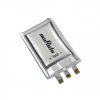 DMF3Z5R5H474M3DTA0
DMF3Z5R5H474M3DTA0 IXFN100N50P
IXFN100N50P LC4032V-75TN48I
LC4032V-75TN48I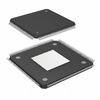 10M02SCE144I7G
10M02SCE144I7G ATMEGA328P-PU
ATMEGA328P-PU MKL05Z32VFM4R
MKL05Z32VFM4R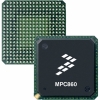 MPC866TCVR100A
MPC866TCVR100A USB5742T/2G
USB5742T/2G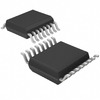 HCPL-788J-000E
HCPL-788J-000E
- R-783.3-0.5
- EPF10K100EFC484-3
- PA12A
- 47L04-I/ST
- MT47H512M8WTR-25E:C
- MAX4514CUK+T
- XC0900P-10S
- OV02710-A68A-1E
- MB85RC256VPF-G-JNERE2
- ERA-6AED1543V
- BY05-05S30L
- M63803FP
- R7S02012
- SKM200GAH126DKLT
- TT250N16KOF
- XC2VP2-7FGG256C
- LMZ35003RKGT
- 74LX1G07CTR
- LTC2955CDDB-1#TRPBF
- MBRM120ET3G
- FSAM30SH60A
- AD7398BRZ
- MBRS4201T3G
- PSM712-LF-T7
- AM29F800BB-70SF
- FDS86240-NL
- HY514264BJC-50
- M30624FGPFP
- PGA309A
- PM5366-PI
- SIL0680ACLU144
- TA78033AF
- TMP96C141BF
- HY628100BLLG-70
- ATA5291-GJQW
- LT8620EMSE
- HA16158FPEL
- K7B163635B-QI75
- F4- 150R12KS4